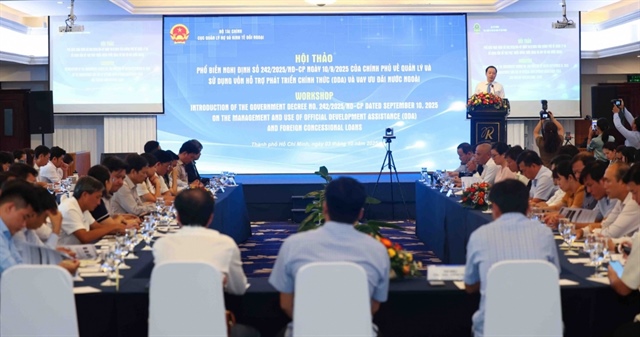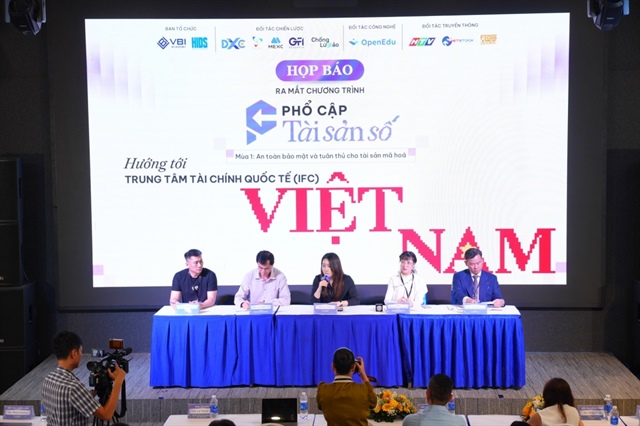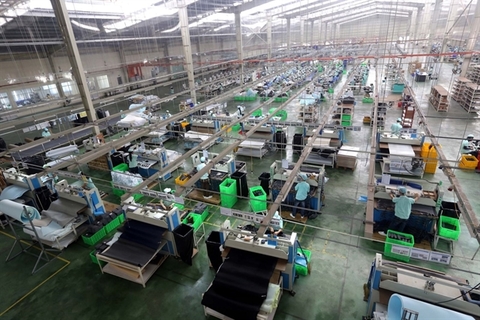Building the mechanism for sturdy FDI efficiency
Building the mechanism for sturdy FDI efficiency
With significant contributions of foreign investment to Vietnam’s social-economic development over the past 30 years, Vietnam is working to increase its quality and efficiency for future attraction. Le Net from LNT & Partners and Nguyen Hung Quang from NHQuang & Associates delve into the last three decades and also look at the importance of new orientations for future investment prospects.
Looking back at foreign direct investment (FDI) over the last 30 years, the results have been very positive, and a group such as Samsung is a perfect example. From a small factory of consumer electronics in Samsung Vina, it has taken bold steps to set up a mobile phone assembly line in the northern province of Bac Ninh. There came a point when that small factory in Bac Ninh out-performed a bigger Samsung assembly line in China in time delivery and productivity.
The South Korean investor soon realised that Vietnamese people are hardworking and very smart. The investor decided to expand investment in their plant in Bac Ninh to over $2 billion, and the rest was history. Another Samsung plant appeared in the northern province of Thai Nguyen for over $10 billion. Later, a Samsung Display plant worth over $1 billion and a further plant in Ho Chi Minh City for over $2.5 billion were established.
Samsung investment can ultimately benefit and lend a hand to the creation of new towns in Thai Nguyen and Bac Ninh, but also attract many satellite investors that produce original equipment and machinery for Samsung. Step by step, more Vietnamese companies have joined the Samsung value chain. The group accounts for 20 per cent GDP of South Korea, and also for 20 per cent of Vietnam’s total exports, employing hundreds of thousands of workers and engineers. The group now has more than 10 per cent of global assets in Vietnam, and created a research and development (R&D) centre in Hanoi. Samsung has chosen Vietnam not because of the tax incentives, but thanks to the Vietnamese people.
Considering the work of Samsung under the spirit of Vietnam’s recently-issued Resolution No.50-NQ-TW on orientations to perfect institutions and policies to enhance the quality and efficiency of foreign investment co-operation through 2030, investors have done what the Party asked for: building R&D centres and bringing more technologies.
Some argue that investors do not pay corporate income tax due to tax incentives, but we have to understand that if they do not come to Vietnam in the first place, we will lose not only income tax, but all taxes, and all chances for development. For the investors to build a refinery at around $9 billion, the government has to provide a government guarantee. Comparing a refinery project with Samsung projects, it is not difficult to see which is in line with Resolution 50. However, the government’s bodies that review Samsung projects often do not share experiences with the authorities that reviewed the investment proposals from other ventures. All investment proposals are subject to the same law, the same holistic but formative review of feasibility study, but then more or less are free to carry out their plans after an investment certificate was granted.
The difference between Samsung and other projects is that for Samsung, authorities are from dynamic provinces such as Ho Chi Minh City, Bac Ninh, and Thai Nguyen. There should be a move to change from “form over substance” and formative investment proposal review, into a “substance over form” and substantive investment post-licensing supervision. That is where Resolution 50 is necessary.
In addition, it is unfair to attribute all efficiencies to the investors, as is listed in the resolution. In the past, Vietnamese authorities lacked the expertise to draw lessons from both good and bad experiences.
However, with the younger generations’ good command of English, western education, and patriotic hearts, they are more sophisticated and can negotiate with foreign partners. That said, we should not interpret Resolution 50 as a protective approach towards investors. Vietnam is like the plan is on the runway and about to take off. Pushing the brake is not a good idea. The idea is to guide the plan to catch the wind and reach new heights.
New orientations
Since the sixth Party Congress in 1986, the congress has targeted to build the multi-sector commodity economy and open the door for international investment co-operation. Many resolutions of the Party have given directions to the attraction and use of FDI, which affirm that the foreign-invested sector is part of the economy, and has equal treatment with other economic sectors. Many estimations and analyses also affirmed that FDI is a key driving force for Vietnam’s economic development and international integration.
Over the past 30 years, there have been significant and regular changes in FDI trends globally. Some countries develop their foreign investment attraction policy to restructure the economy, while some others have this to increase international market access, or to raise labour productivity, attract new technology, and others. Meanwhile, Vietnam’s legal system and policies remain inactive and instable, inconsistent, asynchronous, and lack a strategic vision.
Weakness of domestic companies, shortcomings of the supporting industry, and lack of trained workforce meeting the requirements of multinational corporations have been unsolved problems for years, and recently made impacts on FDI performance and attraction. In the long term, the policies and regulations focused much on incentives for foreign-invested projects, but less attention paid to creating favourable conditions for indirect investment channels such as mergers and acquisitions, as well as securities.
The number of foreign-invested projects with small-scale low technology and labour incentives remain huge. Links between the FDI sector and the domestic private remain loose, resulting in low spillover effects on productivity and technology transfer. Transfer pricing and illegal investment remains popular.
The recently-issued Resolution 50 giving directions towards increasing the quality and efficiency of foreign investment attraction by 2030 is the first time that the Party Central Committee has had a specific resolution on foreign investment attraction.
The general objectives of the resolution is to complete the governance and policies on foreign investment attraction in a high competitive manner amid global integration; to meet the requirements of renewal of the growth model, economic restructuring, environmental protection, and settlement of social issues; and to deal with the shortcomings in building policies on such attraction. The issuance of the resolution comes at the time when sectors reviewed the 30-year performance of FDI attraction, and changes in the global trends in investment movements, economic alliances, and investment protection were more obvious.
Looking at the detail
Resolution 50 covers a number of highlights. First, the scope of policy in the resolution covers all foreign-invested activities, including both direct and indirect investment, not only foreign direct investment as in previous policies. In the past, policies and regulations on incentives and management of indirect investment remained scattered and unsystematic.
The resolution also defines the application of a negative approach instead of positive approach. It is now more aligned with Vietnam’s international commitments.
Another factor is the direct building of criteria on investment to select and give priorities to investment in line with planning and development strategies of specific sectors, fields, and areas; and building of mechanisms to assess security in foreign-invested projects and activities which will possibly have an impact on national security. This approach requires the government to have a plan to attract foreign investment for development of the selected sectors, fields, and localities in the long-term, based on clear criteria and incentives, and based on efficiency of investment instead of being based on on-paper proposals.
The resolution directs the building of privileged incentive policies for key national projects and high-tech ones, and the attraction of strategic investors and multinational corporations to establish R&D centres and innovation centres in Vietnam. What is more, the resolution also asks to study and pilot new business and investment models to tap into the opportunities from Industry 4.0.
In order to increase the efficiency of links between foreign investment and domestic ones, and create a spillover effect of foreign investment on domestic equivalents, the resolution directs the sectors for investment attraction priority. These include development of link industry clusters, increase of domestic added value, and improvement of competitiveness of products and national position in the global value chain.
To avoid Vietnam from being a technology landfill and over-exploitation of energy and natural resources, Resolution 50 also asks to increase the standards and technical regulations on products, environmental protection, natural resources, and energy-saving in line with regional and international standards.
As a result, the regulations on standards, investment incentives, and grant of licenses to overseas investments will have to change in the future.
Finally, in order to prevent disputes between the state and investors, the resolution requires building of a mechanism on prevention and settlement of complaints, and lawsuits from investors; and increase of quality and efficiency of dispute settlement mechanisms.



















